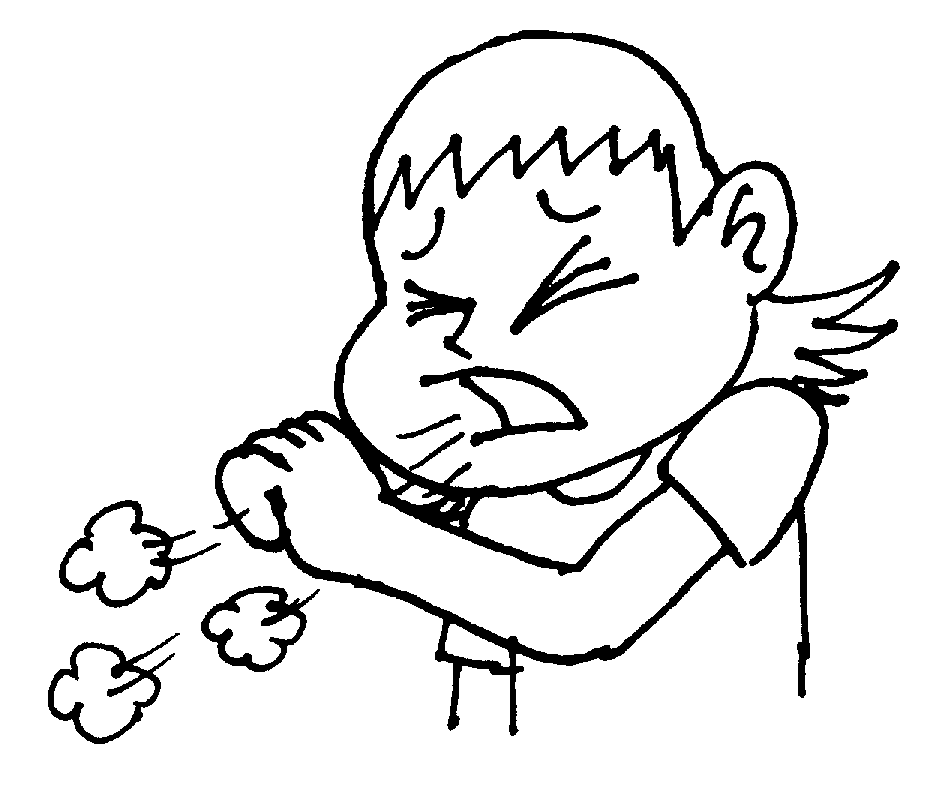

Picture courtesy of tell.fll.purdue.edu/JapanProj/FLClipart/Medical.
Syndromes and Symptoms
There are 51 known immunologically distinct
serotypes of adenovirus that can infect humans. Despite the similarities among
genomic and virion organization of adenoviruses they are unique in both their
routes of transmission and their tissue tropism. Therefore there is little cross-reactivity
between them, so that a given individual can be infected with adenovirus multiple
times throughout his/her lifetime.
Adenoviruses are often asymptomatic and rarely fatal. However they do tend to
cause more severe respiratory disease than enteroviruses and they can persist
in the human host for long periods of time, and they can cause severe complications
in immunocompromised people.
The type of disease caused by adenoviruses depends largely on the route of transmission
and the tissue tropism of the particular strain
Examples:
Acute Respiratory Disease (4, 7, 14, 21):
• Incubation: 3 weeks
• Epidemiology: Most common among military recruits, especially newly
enlisted troops, but rare among healthy civilian adults. Potential explanations
for this include crowded living quarters among troops (and therefore frequent
exposure to infected individuals) and frequent, vigorous exercise. Acute Respiratory
disease is most common in the winter.
• Symptoms and Outcome: Symptoms include fever, malaise, sore throat,
hoarseness, cough, and pneumonia (10% of cases). Infection is generally not
severe and will resolve in 2-4 days (fever) or 10-14 days (complete recovery).
Although there is low mortality associated with acute respiratory disease, up
to 25% of infected military recruits require short-term hospitalization for
fever and infections in the lower respiratory tract.
• Prevention and Management: A vaccine consisting of a capsule of non-attenuated
adenoviruses 4 and 7 was used among military recruits from 1971-1996. Because
the virus was injected, rather than inhaled, it caused asymptomatic infections
in the gut, thereby stimulating an immune response, rather than causing active
infections in the respiratory tract. Thus this vaccine was attenuated by the
route of transmission. The vaccine has not been made since 1996, so general
symptomatic treatment is normally provided. As with all respiratory transmitted
adenoviruses, adenoviruses 4, 7, 14, and 21 can be prevented through diligent
hand washing and other personal hygiene, isolation of patients, overall sanitation
of the living quarters, and by minimizing the amount of crowding and stress
in the recruits lifestyle.
Epidemic Keratoconjunctivitis
(8, 19, 37):
•Incubation: 2-14 days,
although the person may be infectious for 10-14 days after the onset of symptoms.
• Epidemiology: As its name suggests, epidemic keratoconjunctivitis generally
occurs in local outbreaks (such as schools, hospitals, eye clinics, camps, nursing
homes, or workplaces.) The disease has been documented in Asia (especially Japan)
for many years but was not generally found in the United States until an outbreak
of 10,000 cases reported in the shipyards of Pearl Harbor in 1941. Epidemic
keratoconjunctivitis occurs more frequently in adults than children; men and
women are generally infected equally.
• Symptoms and Outcome: Epidemic keratoconjunctivitis tends to have a
sudden onset. Symptoms include eye redness and chemosis followed by periorbital
swelling, pain, photophobia, preauricular lymphadenopathy, punctuate keritis,
and superficial corneal opacities. Most symptoms resolve in 4-6 weeks although
corneal opacities may last for years and may cause permanent visual impairment.
There is very low mortality associated with epidemic keratoconjunctivitis.
• Prevention and Management: There is no vaccine for epidemic keratoconjunctivitis,
so management is normally limited to soothing the infected eye (hot compresses,
etc.) or other symptomatic treatments. Since epidemic keratoconjunctivitis is
spread through direct contact with contaminated surfaces, followed by autoinoculation
of the eye, simple hygienic measures, such as hand washing or glove wearing
and sterilization of contaminated surfaces.
Others:
• Pneumonia (1, 2, 3, 7)
• Pharyngitis (1, 2, 3, 5, 7)
• Pharyngoconjunctival fever (3, 7)
• Follicular conjunctivitis (3, 4, 11)
• Petussis-like syndrome (5)
• Acute infantile gastroenteritis (40, 41)
• Intususseption (1, 2, 5)
• Meningitis (3, 7)
• Other severe disease in immunocompromised people (5, 34, 35)
The severity of disease caused by adenoviruses also depends on the age and immune
status of the infected individual, although a variety of other social and physical
factors may also cause more severe disease. Examples of immunocompromised people
include premature babies/neonates, transplant recipients, cancer patients, or
those suffering from HIV/AIDS or a genetic disorder such as SCIDS. Severe and
potentially deadly infections in immunocompromised people include pneumonia,
hepatitis, encephalitis, nephritis, and gastroenteritis. Up to 50% of SCIDS
patients die of complications associated with adenovirus infection.